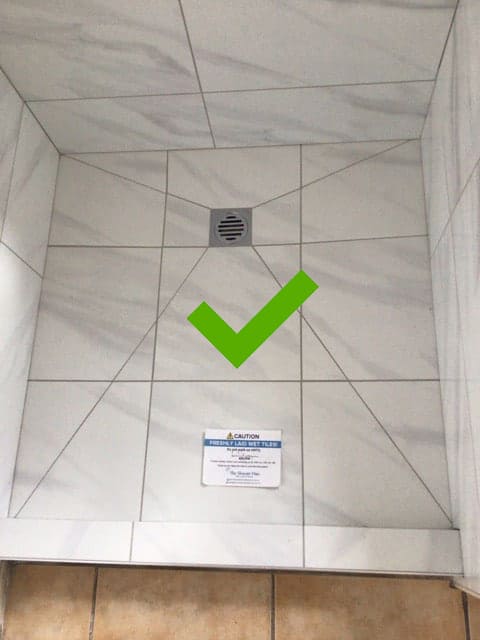How do you really feel with regards to How to Repair and Prevent Bathroom Water Damage?

The bathroom is exceptionally prone for moist accumulation and also prospective water damage as a result of the regular use of water in it. This write-up uses simple examination methods to help identifying water damages risks.
The constant use of water in the bathroom makes it exceptionally vulnerable for wet build-up and prospective water damage. By evaluating it frequently, you can reduce water associated damages.
The adhering to set of examinations is simple to perform as well as should be done when in every three months in order to maintain your bathroom healthy and to stop potential water problems caused by the tub, the shower, pipe joints as well as plumbing, sinks, closets, as well as the commode
Do not overlook executing these evaluations and also be comprehensive while executing them. Keep in mind that these basic inspections can save you a great deal of money by supplying very early indicators for water damages
Sinks and Cabinets
Sinks as well as closets are exposed to wetness and also humidity everyday and also are frequently ignored. Inspect frequently under the sink and also on the countertop above it. Fix any kind of drip in the trap as it might recommend drain problems. Browse the sink, slow-moving draining pipes may suggest an obstructed drain. Replace sink seals if they are split or loosened.
Bathtub and Shower
The shower as well as bath tub require special interest as well as upkeep. Check the tiles as well as change if fractured. Make sure that there is no missing grout in between the floor tiles. Evaluate and replace broken caulking at joints where the wall surfaces fulfill the flooring or the bath tub. Clogged drains as well as pipes issues will certainly protect against the bath tub from drying and may suggest major issues underneath the bath tub. Seek advice from a professional immediately to prevent structural damage. Take note of discolorations or soft areas around the tub wall surfaces as they might suggest an interior leakage.
Plumbing
Signs for water damages are difficult to find given that the majority of pipelines are mounted inside the wall surfaces.
Pay unique focus to floor covering as well as wall surfaces wetness as well as spots as they may suggest an unnoticeable plumbing issue. Check moisture levels in adjoining areas too.
The Commode
The commode is a prone water junction. Check the water lines and search for leakages around the commode seat, in the tube, as well as under the water storage tank. If you discover any type of signs of moisture on the floor around the bathroom, check for leaks in the toilet edge as well as storage tank seals.
Understand that hanging toilet bowl antiperspirants boosts the possibilities for blockages.
Water Damage Signs In The Bathroom To Avoid Cleanup
Musty smell
This is one of the easiest signs to catch because musty smells are so odorous. The damp, earthy, moldy smell should be a big red flag. The smell will develop when moisture gets trapped in surfaces, and begins to facilitate mold growth. Leaking pipes under cabinets, inside walls, and behind shower fixtures will cause moisture to stay trapped and not dry, which will lead to mold growth and spread. As soon as you notice any musty smells in your bathroom, have it checked for hidden water damage and cleanup signs.
Visible mold
If the smell isn’t there to give it away, sometimes you will actually see mold growth. Finding mold in your bathroom is a serious problem, because mold is very harmful to your health. By the time mold growth is visible, it also means that water damage has already occurred and been present for some time. The only way the mold problem can be resolved is to find the source of the moisture and get it stopped. To safely and adequately remove mold, you need to have professionals handle the remediation. Do not waste any time in getting mold problems addressed, fixed, and sanitized so that you can protect you and your family from the many respiratory symptoms caused by mold exposure.
Damaged floors
Bathroom floors should be able to withstand some exposure to water while still remaining in good condition. However, when excess exposure or water leaks occur, they will begin to damage even the most water-resistant flooring. If you notice any cracking, bubbling, staining, or warping on your bathroom floors, there is probably a water leak somewhere causing the distortion. If you notice areas of the floor have become softer, or even have a spongy feeling, there is probably damage to the subfloor. Subflooring is typically made up of plywood. When plywood is exposed to water or moisture, it will absorb it. Once it has become saturated, the weight of the excess water will cause the wood to swell and soften. Check the floors in your bathroom frequently to catch any of these sings before they lead to damaged subflooring.
Changes on walls
When water leaks behind walls, it will cause changes in the drywall. Peeling plaster, blistering paint, and soggy wallpaper are all good indicators that excess water is building up behind the wall. Water leaking behind drywall will cause it to swell and be soft to the tough. If you start to notice gaps along the trim of your walls, or where tile meets the wall, it could also be a strong indicator that there is a leak behind the wall. Any changes, distortion, or damage on the walls should be evaluated as soon as you notice it to prevent further water damage and cleanup.

I discovered that piece on Preventing Water Damage in the Bathroom while doing a lookup on the internet. Enjoyed our article? Please share it. Help other people locate it. Thanks so much for taking the time to read it.
Click Here To Read More